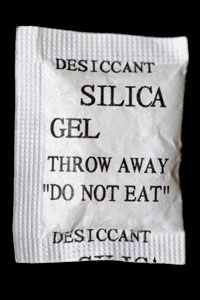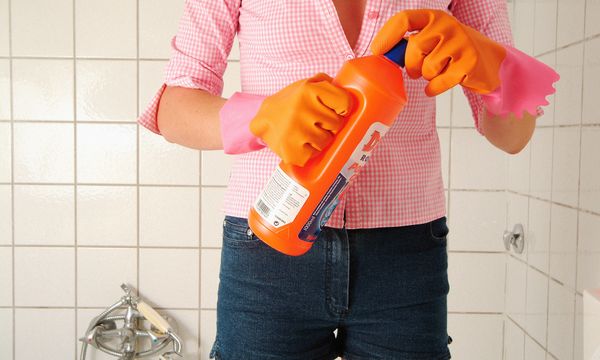What you would be consuming is most likely silica gel or some other desiccant -- something that absorbs (collects) and holds water vapor. These little packets are found in all sorts of products to help maintain quality.
Shipping can cause all kinds of atmospheric conditions and changes in temperature. Increased moisture can spoil or permanently damage many products. For example, if a bottle of vitamins contained any moisture vapor and was cooled rapidly, the condensing moisture would ruin the pills. You'll find little silica gel packets in anything that would be affected by excess moisture or condensation.
Advertisement
Silica gel can adsorb about 40 percent of its weight in moisture and can take the relative humidity in a closed container down to about 40 percent. Once the gel is saturated, you can get rid of the moisture and reuse silica gel by heating it above 300 degrees Fahrenheit (150 degrees Celsius).
Silica gel is nearly harmless, and that's why you find it in food products. Silica, which is actually silicon dioxide (SiO2), is the same material found in quartz. The gel form contains millions of tiny pores that can adsorb and hold moisture -- it's essentially porous sand.
While the contents of a silica gel packet are basically harmless, it would be a rather unpleasant experience to attempt to consume the silica crystals. The sole job of these tiny desiccants is to adsorb moisture. If you emptied a packet of the stuff into your mouth, the moisture would be whisked away from the sides and roof of your mouth, your gums and tongue -- giving an entirely new and all-too-accurate meaning of the phrase "dry mouth." If silica gel did happen to make it past your mouth -- which is unlikely because you would probably be making every effort to spit it out -- you might suffer a few irritating side effects, such as:
- Dry eyes
- An irritated, dry feeling in your throat
- Aggravated, dry mucous membranes and nasal cavity
- An upset stomach or stomach discomfort
So just how many silica packets would it take to adsorb all the water from someone's body? Let's use a 210-pound man as an example. We know that 70 percent of a human body is made up of water - 70 percent of 210 pounds is 147 pounds of water. We also know that silica gel can adsorb about 40percent of its weight in moisture. So 10 pounds of silica gel are needed to adsorb 4 pounds of water.
It turns out that it would take 367.5 pounds of silica gel to adsorb 147 pounds of water. Since a single packet of silica gel weighs 0.1 ounces, that means a 210-pound man would have to consume 58,800 packets of silica gel.
Advertisement


